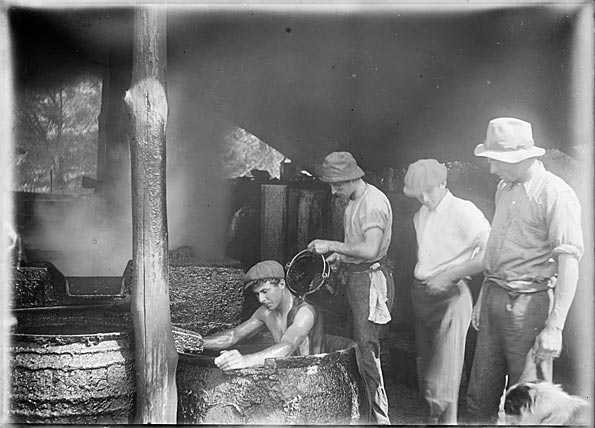Scootle has stopped supporting resources that use the Adobe Flash plug-in from 18 Dec 2020. Learning paths that include these resources will have alerts to notify teachers and students that one or more of the resources will be unavailable. Click here for more info.
 Whale oil as a cure for rheumatism, Twofold Bay, early 1900s
Whale oil as a cure for rheumatism, Twofold Bay, early 1900s
TLF ID R3583
This is a black-and-white photograph (12.0 cm x 16.4 cm) taken at Eden, New South Wales, showing the master whaler Charlie Davidson sitting in one of two 'try pots' in the foreground as another whaler, Roy Davidson, pours whale oil over him. Two other whalers, Jack Davidson and Alex ('Allie') Greig, are standing nearby, one of them watching the process. A large try pot with steam rising from it is visible in the background.
